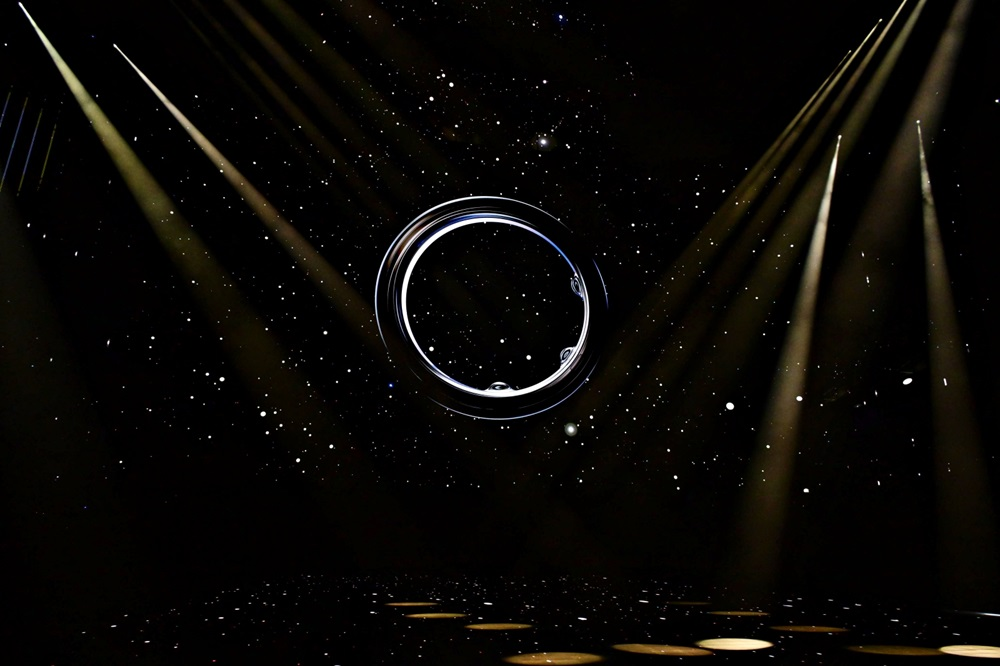Hardware
The next big thing is a ring
It was the final announcement of the Samsung Galaxy Unpacked event, and possibly the most important, writes ARTHUR GOLDSTUCK.
A new form factor in consumer technology is on its way, and it’s about as small as gadgets get. At the launch of the Samsung Galaxy S24 smartphone range in San Jose, California last week, the thunder was almost stolen by the announcement of an upcoming device that won’t be found in stores until later this year.
The Galaxy Ring will be a health monitoring device that enters the arena of an almost entirely new category of technology called the smart ring. Samsung is not first with the concept, but is likely to be the most formidable.
It goes up against the Oura Ring, launched by a Finnish health technology company as far back as 2015 and now in its 3rd generation, and the Evie, a female health-oriented smart ring announced two years ago and released this month. The Oura has sold more than a million units, providing an early indication of the potential of the market.
The fundamental difference is that neither of these gadgets are part of a broader ecosystem of devices. The Galaxy Ring will slot neatly into not only the Galaxy range of smartphones, tablets, earbuds and watches, but also into Samsung’s mature range of health monitoring applications.
The Galaxy Watch series, in particular, is among the world’s most advanced fitness and health tracking platforms, competing directly with the Fitbit, Huawei and Apple equivalents.
Now, its functionality will be built into the Galaxy Ring, which will be closely integrated with all the other form factors that carry the Galaxy sub-brand. It will also draw heavily on Galaxy AI, the artificial intelligence (AI) functionality unveiled for the Galaxy S24 range this week.
Unusually, the honours for making the climactic announcement at the Galaxy Unpacked event fell to a scientist. Dr Matthew Wiggins, a clinical research scientist at Samsung Research, took the stage to describe new capabilities for the Samsung Health app, which will use AI to monitor sleep apnea symptoms via sleep tracking algorithms, as well as heart rate regularity and changes to blood oxygen.

Matthew Wiggins, Head of Samsung Research America’s Health Solutions Lab, giving a talk about the Galaxy Ring.
He left the smart ring announcement for last, declaring: “Today we are taking the possibilities of Samsung health to the next level by bringing Samsung Health’s cutting edge innovations to a brand new form factor. We’ve created a powerful and accessible health device here to change the shape of future health. Meet the Galaxy Ring.”
It was the equivalent of the legendary “one more thing” announcements made by Steve Jobs during Apple launches in past years, but few will remember who made this announcement.
On the other hand, literally and figuratively, the smart ring could transform health monitoring. Many people who dislike wearing smart watches to track their sleep, because they tend to be invasive or uncomfortable, will be able to turn to an unobtrusive ring to do the same job.
A video of the Galaxy Ring shared by Wiggins hinted at some of its capabilities: It has a small cluster of four lights that are probably sensors to measure vital statistics like pulse rate and blood flow; and three inward-facing studs that could track steps, body temperature, movement during sleep, breathing, oxygen flow, and the like.
It is likely to be extremely light, will obviously come in a range of sizes, and would probably be offered in a range of colours and finishes to match users’ styles.
The Oura and Evie include menstrual cycle prediction, with the latter also offering calculation of fertility windows. Samsung may well add such functions but, regardless, will have the entire user base of existing Galaxy users as its target market.
As is often the case with a new form factor, there will be one major barrier to entry: price. Such advanced technology will not come cheap.
* Arthur Goldstuck is founder of World Wide Worx, editor-in-chief of Gadget.co.za and author of “The Hitchhiker’s Guide to AI”. Follow him on Twitter and Instagram on @art2gee



















